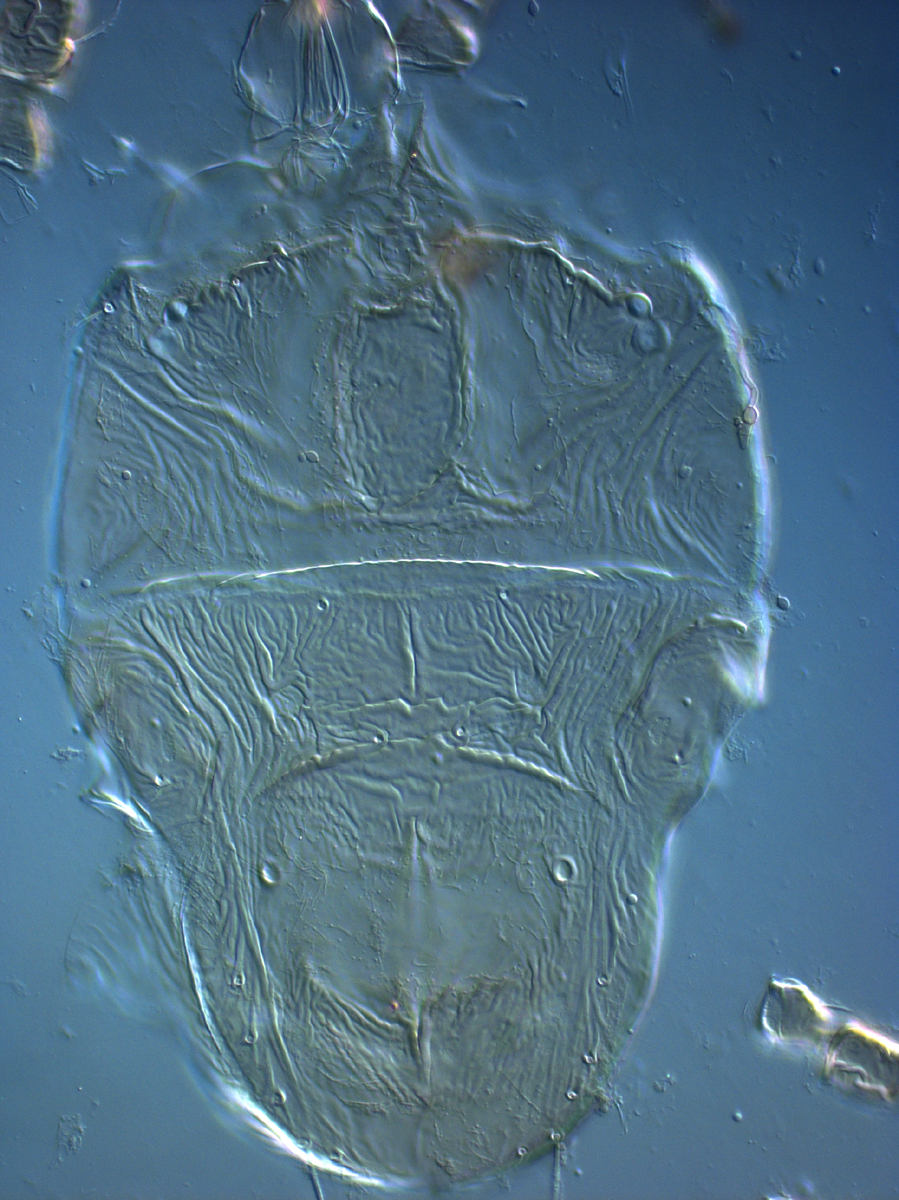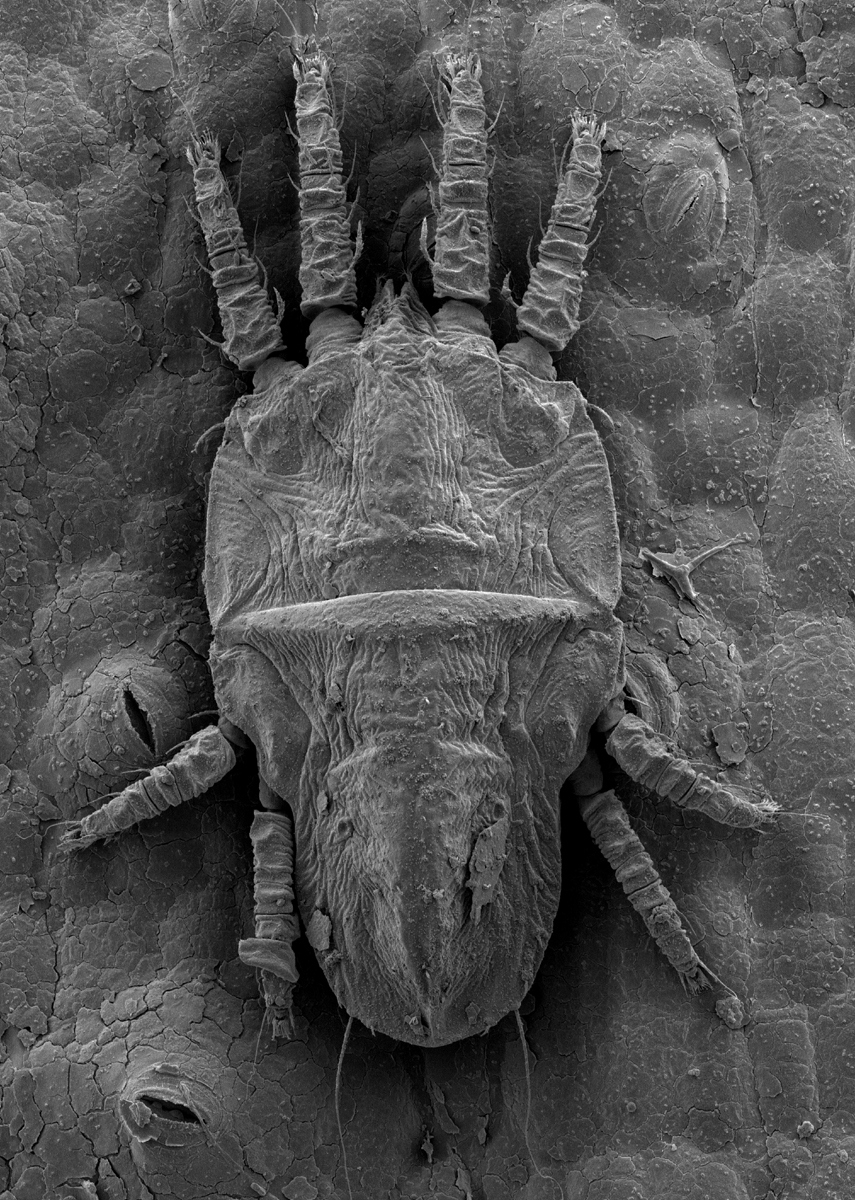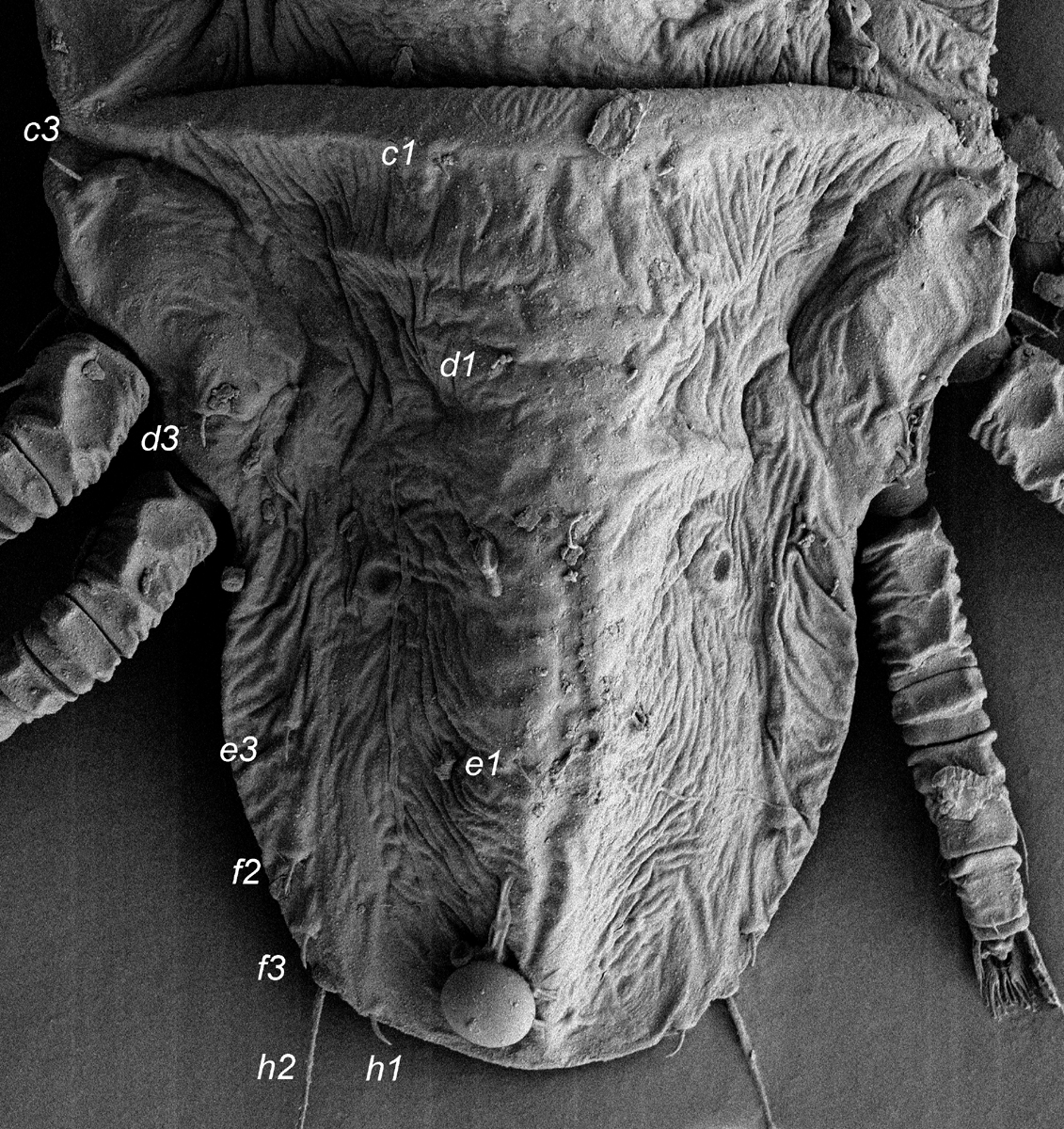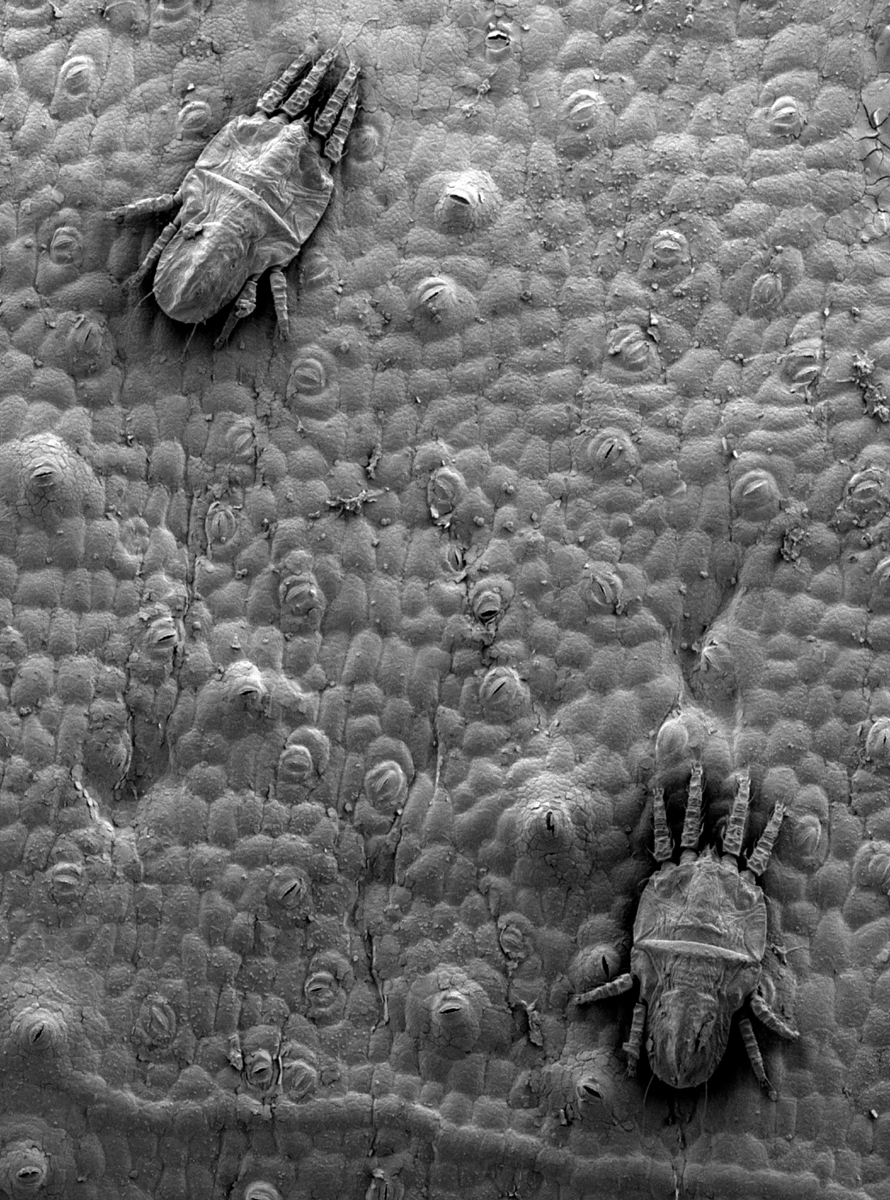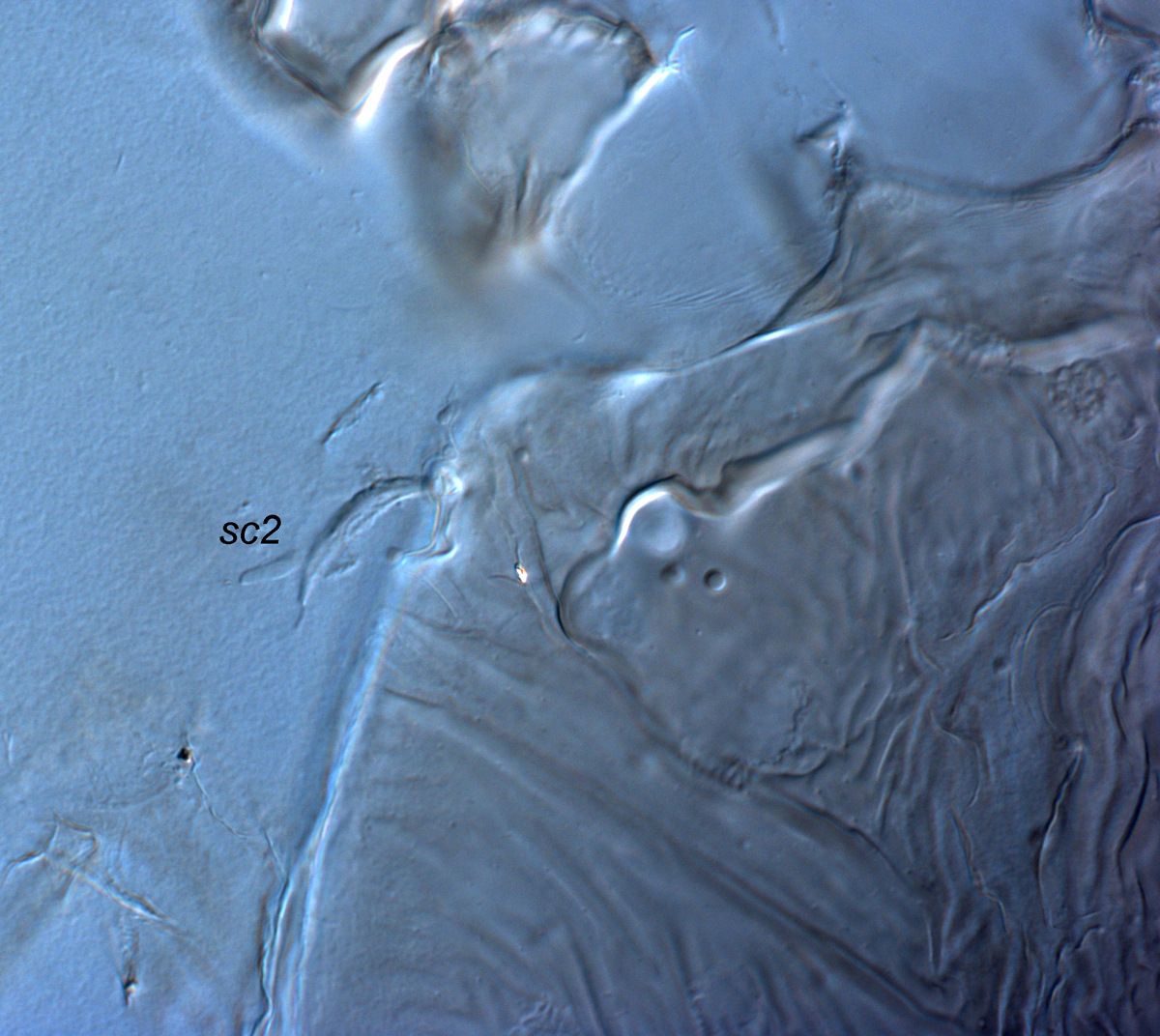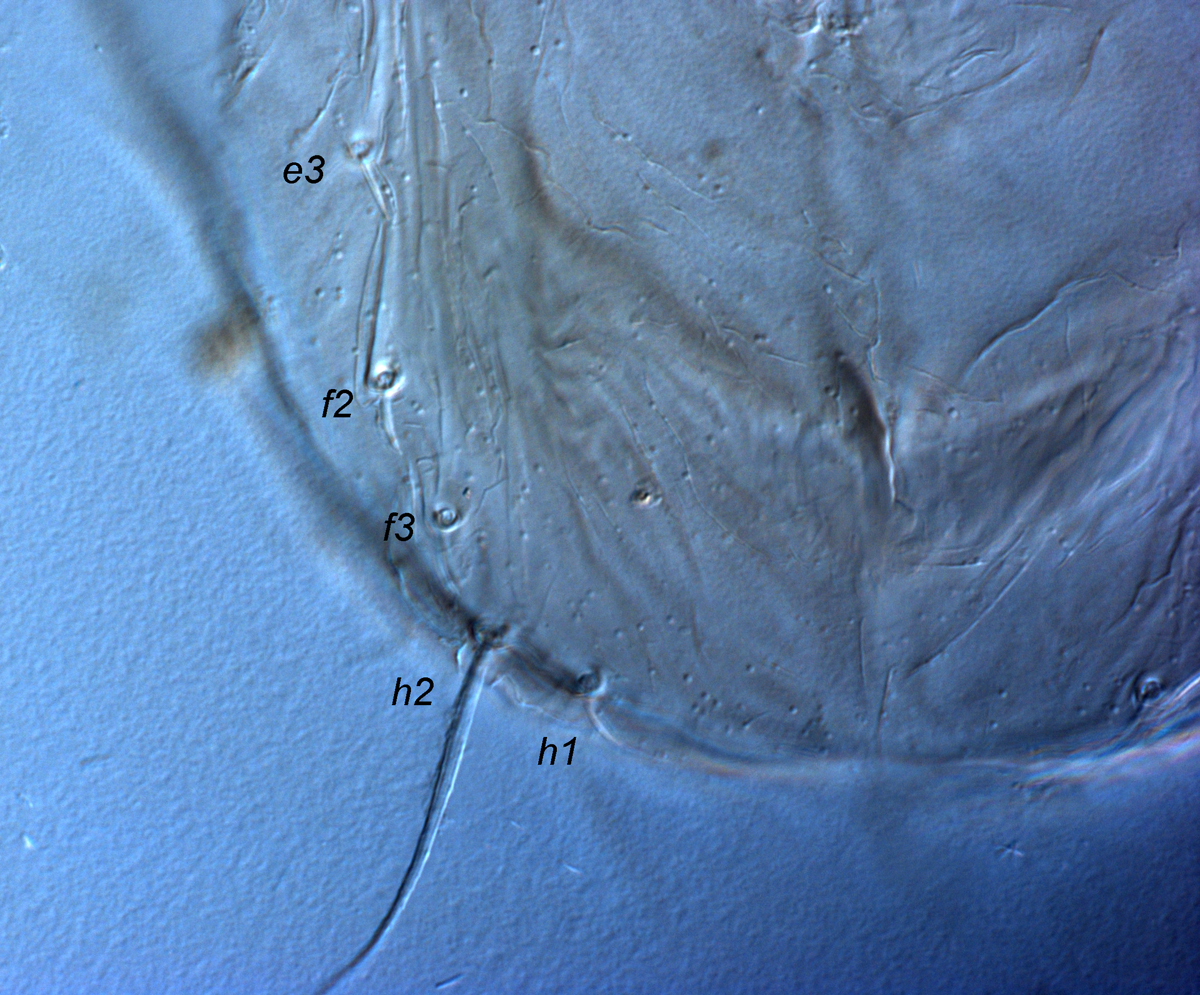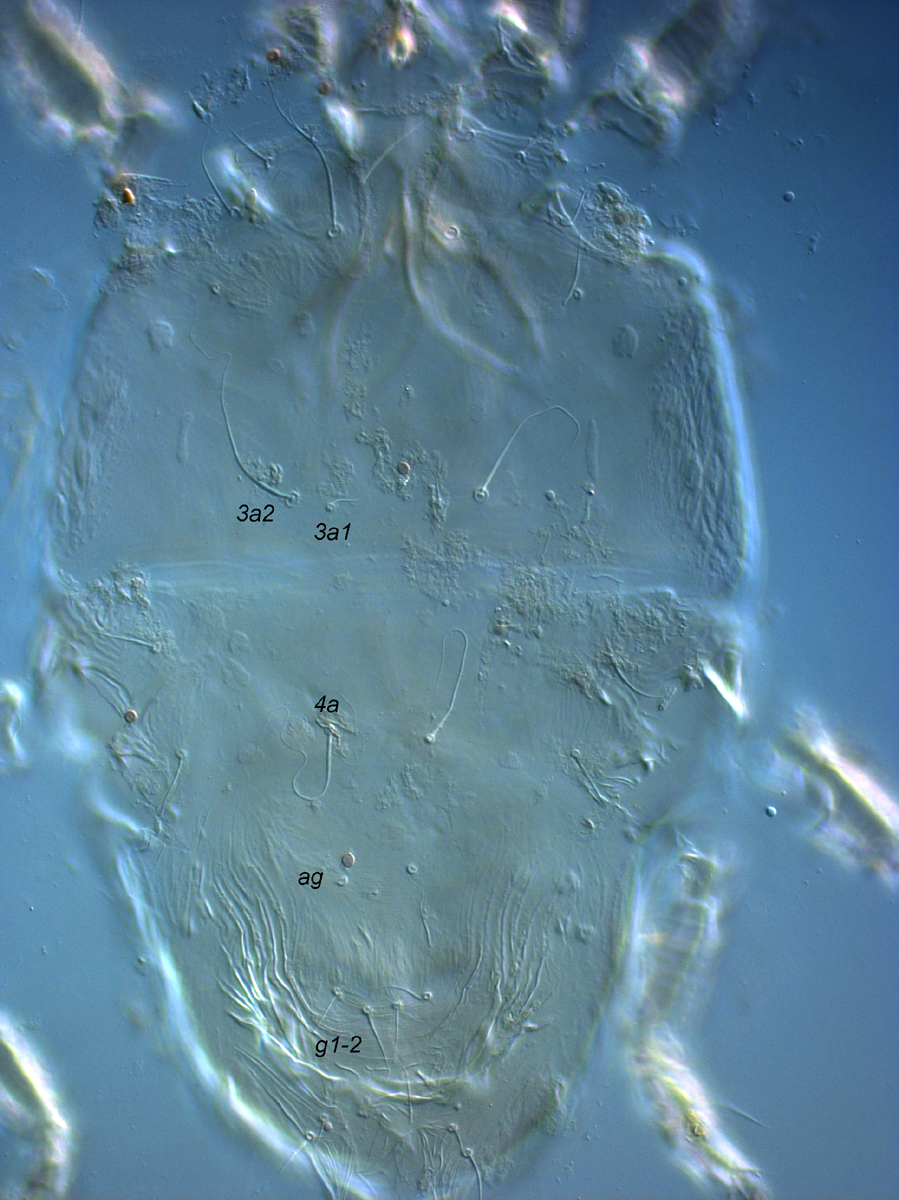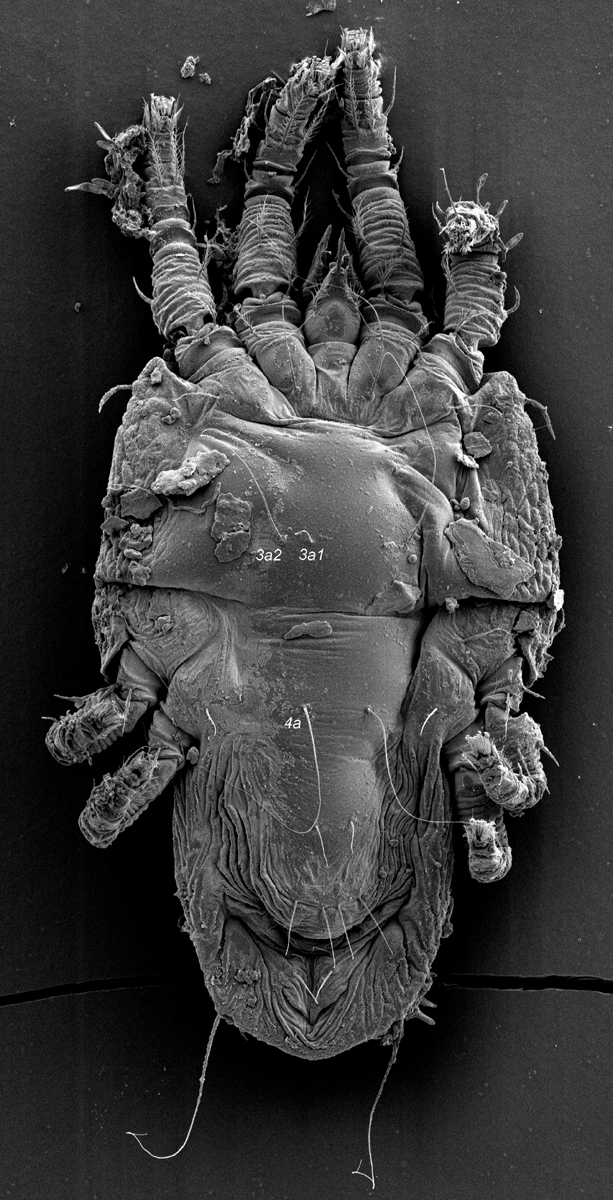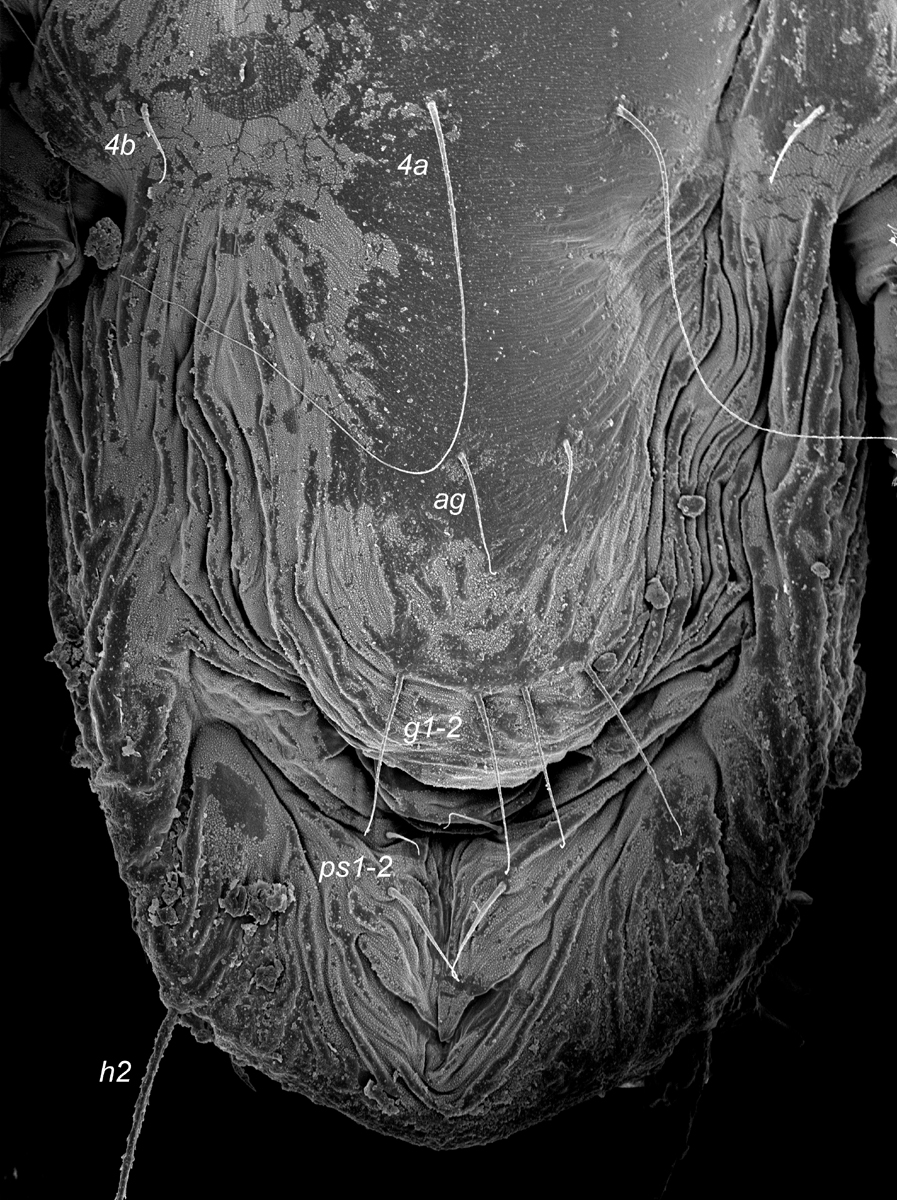Tenuipalpus sp nov nr crassulus
|
Fig. 1. Tenuipalpus sp. nov. nr crassulus female dorsum.
|
|
Fig. 2. Tenuipalpus sp. nov. nr crassulus female dorsum (Image: Gary R. Bauchan, USDA-ECMU).
|
|
Fig. 3. Tenuipalpus sp. nov. nr crassulus female dorsal opisthosoma (Image: Gary R. Bauchan, USDA-ECMU).
|
|
Fig. 4. Tenuipalpus sp. nov. nr crassulus females on host (Image: Gary R. Bauchan, USDA-ECMU).
|
|
Fig. 5. Tenuipalpus sp. nov. nr crassulus female prodorsal setae sc2.
|
|
Fig. 6. Tenuipalpus sp. nov. nr crassulus female posterior dorsum, indicating lateral setae.
|
|
Fig. 7. Tenuipalpus sp. nov. nr crassulus female posterior dorsum, indicating lateral setae.
|
|
Fig. 8. Tenuipalpus sp. nov. nr crassulus female venter.
|
|
Fig. 9. Tenuipalpus sp. nov. nr crassulus female venter (Image: Gary R. Bauchan, USDA-ECMU).
|
|
Fig. 10. Tenuipalpus sp. nov. nr crassulus female posterior venter, indicating genital region (Image: Gary R. Bauchan, USDA-ECMU).
|
Key characters
- dorsal setae c1, d1, e1, f2 present (Figs. 1-4)
- prodorsal setae sc2 of moderate length (18-26 microns), curved (Fig. 5)
- dorsal lateral setae e3, f2, f3 short (7-12 microns), setiform, straight (Figs. 6, 7)
- 2 pairs of ventral setae 3a, 1 pair setae 4a (Figs. 8-10)
Recorded hosts
Aloe sp. (Xanthorrhoeaceae (formerly Liliaceae)); Crassula tetragona (Crassulaceae); Echeveria black prince, E. nodulosa, E. rosea, Echeveria sp. (Crassulaceae); Pachypodium spp. (Apocynaceae); Sedum adolphii, S. rubrotinctum (Crassulaceae).Recorded distribution
USA (FL)Remarks
This species is currently being described by Welbourn, Beard, Bauchan & Ochoa (in prep.). It was recently found feeding on Crassulaceae in Florida and was initially identified as the morphologically similar species, T. crassulus.
Feeding by this mite on Aloe causes dark blotches that often turn dark red/maroon. On Crassulaceae hosts, feeding starts along the stems and distal leaf tips. As the population grows, increased feeding causes the host leaves to turn a rusty colour before complete darkening of the leaf surface, resulting in dry cracked lesions. The mite feeds and lays its eggs in along the stems and leaf tips, but are often found in high numbers on the underside of leaves.
The adult mite is cream to light brown in colour, often with a slight greenish tinge, and eggs are lemon to orange.

